This day was dedicated to relaxing, having fun and sightseeing so we got up, packed up, had breakfast and hit the road.
We had a quick look around the foreshore of Port Cambell but all the wonderous sights of the area beckoned us
.
Our first stop was the Loch Ard Gorge. This was the site of the running aground and sinking of the sailing clipper 'Loch Ard', which ran aground on nearby Muttonbird Island on 1 June 1878 approaching the end of a three-month journey from England to Melbourne. Of the fifty-four passengers and crew, only two survived: Tom Pearce, a ship's apprentice, and Eva Carmichael, an Irishwoman immigrating with her family, both of whom were 18 years of age. Tom Pearce was washed ashore first, and then he rescued Carmichael from the water after hearing her cries for help. After a cold night and Eva suffering from hypothermia they managed to stay warm by drinking the rum which had been washed ashore. The next morning, Pearce proceeded to climb out of the gorge to raise the alarm to local pastoralists who immediately set into plan a rescue attempt.
The Loch Ard story had fascinated us for days now since we had first heard of it back at the Cape Otway lighthouse and was embedded in our minds when we camped at Point Franklin with sounds of the heavy seas crashing throughout the night
.
Anyway.....the Loch Ard Gorge is located in a cluster of sights to see so we parked in the carpark and began our walk. Some cyclists passed us who recommended doing it by bike and since we had the bikes on the back of the van we wondered if it would be worthwhile unhitching them. About 40 metres further down the path a massive staircase down to the gorge soon convinced us that we may not need the bikes.
Once we were at the bottom we were completely fascinated, we must've spent 30 minutes just looking at the gorge and imagining where everything took place, where Tom got washed up, where he found Eva and where they found shelter in the cave at the back of the gorge. Apparently, there was so much debris from the shipwreck that it was piled 2 metres high. Items included pianos, concertinas, dresses, candles, spirits & champagne. The rum just may have saved the lives of the two survivors who had just climbed out of the water in the middle of winter
.
We then found the cave where they took refuge (now known as Carmichael's Cave) and found it to be well sheltered from the southern wind and rain.
After taking a heap of photos we headed back up the stairs to the cemetary which was close by. Buried there are the only 4 bodies recovered but there was also a memorial to the lives lost, some of which were Eva Carmichael's family including her mother. The next sight along the walk was Muttonbird Island. 50,000 muttonbirds live on the island and migrate to Siberia during our winter. They lay their eggs on Muttonbird Island and they hatch there, each parent feeds the single chick for 2–3 days and then leaves for up to three weeks in search of food. These foraging trips can cover a distance of 1,500 km (930 mi) and mean the chick may be left unattended for over a week. In mid-April, the parents embark on their migration to Siberia while the chicks just hang around until they have lost their baby fat and they are light enough to learn to fly and then embark on their migration to Siberia one month after their parents
. Miraculously, they always find them. (NB: Muttonbirding - ie: the killing of baby muttonbirds is still occurring in Tasmania. We feel this needs to be stopped. It's just plain wrong).
The Muttonbird Island lookout was a great vantage point for the whole area. We noticed that Muttonbird Island itself is vulnerable to erosion and may one day fall into the ocean. From here we walked a bit further to the Thundercave. The Thundercave is exactly as the name suggests, a large cave in the sandstone that thunders when a wave crashes into it. We could see the remains of what was once the old footpath but it was now fenced off with danger signs everywhere. Once at the lookout, we saw why they fenced it off...the next section to collapse looked like it could quite possibly take down the whole face of the cliff. After the Thundercave we were off to the Sherbrooke River.
The Sherbrooke River is a smallish river that winds it's way down to the coast from the hills around Timboon
. Once it gets to the sea it forms a lagoon just behind the beach which doesn't appear to flow into the ocean unless in flood. The weather was fairly inclement, wind and cold rain hitting our faces quite hard when dark clouds passed, then the sun would come out and we would steam up in our cold weather gear. We watched the huge pounding waves hit the rock platform and checked out the debris washed up on the beach. We saw plenty of fox footprints and dismembered bird parts strewn around, mostly Muttonbirds, and mostly wings left behind.
After this it was a few km to the Archway and the Razorback which were both spectacular rock formations. After walking 3.2kms of track plus all the sidetracks, staircases and hills we did, we were starving so we decided to have lunch. We expected the cafe at the Twelve Apostles to have food so we headed there to have a look. Unfortunately they only did coffee and cakes so it was off to Port Campbell for lunch. As it was already 1:30pm we quickly decided on the Greek restaurant in town
. I think I had a burger and chips. We soon made friends with the local sparrows who we shared some food with. I couldn't believe how many New Holland Honeyeaters and Wattlebirds were all over the place too. At home in Sydney, I only know of one place where I can see New Holland Honeyeaters and it is a 30 minute drive away so I was happy.
After lunch we did the 10 kms back to see Gibson Steps during the afternoon and then hopefully make it to the Twelve Apostles so that we could catch the sunset. We got to Gibson Steps with plenty of time to spare so we took stacks of photos as you can see below. There was a bit of a sidetrack that met up with the Great Ocean Walk which made us realise that all along the walk there must be camping areas for the walkers which sounded like fun (we will do it one day) but we were glad to have the camper as our home for this trip. After about a million photos we jumped into the van and headed towards the Twelve Apostles carpark. The sunset was perfect, we had an ideal balance of red sunset and stormy cloud allowing us to see two moods of the Twelve Apostles. I also managed to get a few shots of an offshore gas well platform - I believe this was either Otway Gas Project or Casino Gas Project.
Finally, at sundown we were knackered. We headed back to Port Campbell, set up camp, ate dinner, showered and passed out.
Day 10 - Port Campbell (2nd day) & Twelve Apostles
Thursday, April 26, 2012
 Port Campbell, Victoria, Australia
Port Campbell, Victoria, Australia
Other Entries
-
1Day 1 - Sydney to Gundagai
Apr 179 days prior Gundagai, Australiaphoto_camera0videocam 0comment 0
Gundagai, Australiaphoto_camera0videocam 0comment 0 -
2Day 2 - Gundagai to Beechworth
Apr 188 days prior Beechworth, Australiaphoto_camera0videocam 0comment 0
Beechworth, Australiaphoto_camera0videocam 0comment 0 -
3Day 3 - Beechworth to Phillip Island
Apr 197 days prior Phillip Island, Australiaphoto_camera9videocam 0comment 0
Phillip Island, Australiaphoto_camera9videocam 0comment 0 -
4Day 4 - Phillip Island
Apr 206 days prior Phillip Island, Australiaphoto_camera10videocam 0comment 0
Phillip Island, Australiaphoto_camera10videocam 0comment 0 -
5Day 5 - Phillip Island to Morning Peninsula
Apr 215 days prior Mornington Peninsula, Australiaphoto_camera16videocam 1comment 0
Mornington Peninsula, Australiaphoto_camera16videocam 1comment 0 -
6Day 6 - Sorrento & Portsea areas
Apr 224 days prior Sorrento, Australiaphoto_camera22videocam 0comment 0
Sorrento, Australiaphoto_camera22videocam 0comment 0 -
7Day 7 - Sorrento to Great Ocean Rd to Wye River
Apr 233 days prior Wye River, Australiaphoto_camera24videocam 5comment 0
Wye River, Australiaphoto_camera24videocam 5comment 0 -
8Day 8 - Wye River to Cape Otway (Great Ocean Road)
Apr 242 days prior Cape Otway, Australiaphoto_camera29videocam 3comment 0
Cape Otway, Australiaphoto_camera29videocam 3comment 0 -
9Day 9 - Cape Otway to Port Campbell
Apr 251 day prior Port Campbell, Australiaphoto_camera34videocam 5comment 0
Port Campbell, Australiaphoto_camera34videocam 5comment 0 -
10Day 10 - Port Campbell (2nd day) & Twelve Apostles
Apr 26 Port Campbell, Australiaphoto_camera59videocam 1comment 0
Port Campbell, Australiaphoto_camera59videocam 1comment 0 -
11Day 11 - Port Campbell to Warrnambool
Apr 271 day later Warrnambool, Australiaphoto_camera39videocam 14comment 0
Warrnambool, Australiaphoto_camera39videocam 14comment 0 -
12Day 12 - Warrnambool & local area
Apr 282 days later Warrnambool, Australiaphoto_camera15videocam 7comment 0
Warrnambool, Australiaphoto_camera15videocam 7comment 0 -
13Day 13 - Warrnambool to Portland
Apr 293 days later Portland, Australiaphoto_camera19videocam 5comment 0
Portland, Australiaphoto_camera19videocam 5comment 0 -
14Day 14 - Portland & Surrounds
Apr 304 days later Portland, Australiaphoto_camera26videocam 8comment 0
Portland, Australiaphoto_camera26videocam 8comment 0 -
15Day 15 - Portland to Port Macdonnell
May 015 days later Port MacDonnell, Australiaphoto_camera24videocam 12comment 0
Port MacDonnell, Australiaphoto_camera24videocam 12comment 0 -
16Day 16 - Port MacDonnell to Beachport
May 026 days later Beachport, Australiaphoto_camera30videocam 17comment 0
Beachport, Australiaphoto_camera30videocam 17comment 0 -
17Day 17 - Beachport to Naracoorte
May 037 days later Naracoorte, Australiaphoto_camera34videocam 11comment 0
Naracoorte, Australiaphoto_camera34videocam 11comment 0 -
18Day 18 - Naracoorte to Meningie
May 048 days later Meningie, Australiaphoto_camera31videocam 6comment 0
Meningie, Australiaphoto_camera31videocam 6comment 0 -
19Day 19 - Meningie to Port Elliot
May 059 days later Port Elliot, Australiaphoto_camera27videocam 16comment 0
Port Elliot, Australiaphoto_camera27videocam 16comment 0 -
20Day 20 - Port Elliot to Wirrina Cove
May 0610 days later Wirrina Cove, Australiaphoto_camera40videocam 11comment 0
Wirrina Cove, Australiaphoto_camera40videocam 11comment 0 -
21Day 21 - Wirrina Cove, Yankalilla to Adelaide
May 0711 days later Adelaide, Australiaphoto_camera20videocam 11comment 0
Adelaide, Australiaphoto_camera20videocam 11comment 0 -
22Day 22 - Adelaide City & Zoo by bike
May 0812 days later Adelaide, Australiaphoto_camera42videocam 21comment 0
Adelaide, Australiaphoto_camera42videocam 21comment 0 -
23Day 23 - Adelaide City, West Beach & Glenelg areas
May 0913 days later Glenelg, Australiaphoto_camera30videocam 16comment 0
Glenelg, Australiaphoto_camera30videocam 16comment 0 -
24Day 24 - Adelaide to Murray Bridge to Blanchetown
May 1014 days later Blanchetown, Australiaphoto_camera29videocam 15comment 0
Blanchetown, Australiaphoto_camera29videocam 15comment 0 -
25Day 25 - Blanchetown to Berri & Lyrup Flats
May 1115 days later Lyrup Flats, Australiaphoto_camera19videocam 12comment 0
Lyrup Flats, Australiaphoto_camera19videocam 12comment 0 -
26Day 26 - Lyrup to Renmark & Chowilla Game Reserve
May 1216 days later Chowilla Game Reserve, Australiaphoto_camera28videocam 6comment 0
Chowilla Game Reserve, Australiaphoto_camera28videocam 6comment 0 -
27Day 27 - Chowilla SA to Buronga VIC
May 1317 days later Buronga, Australiaphoto_camera24videocam 12comment 0
Buronga, Australiaphoto_camera24videocam 12comment 0 -
28Day 28 - Buronga to Lake Mungo
May 1418 days later Mungo National Park, Australiaphoto_camera52videocam 23comment 0
Mungo National Park, Australiaphoto_camera52videocam 23comment 0

 Port Campbell, Victoria, Australia
Port Campbell, Victoria, Australia
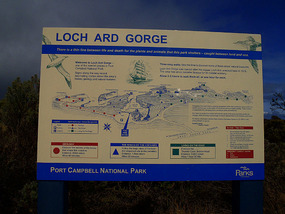
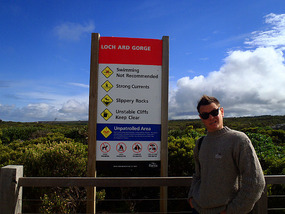
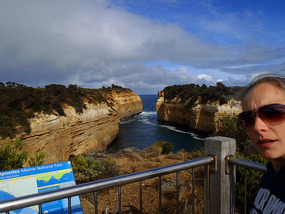
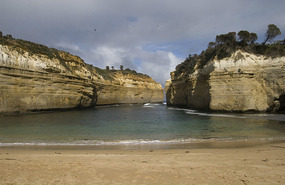


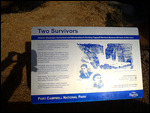
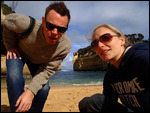



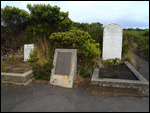
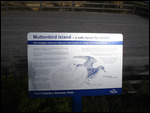

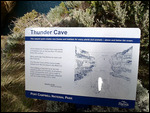
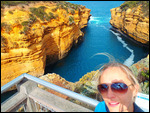
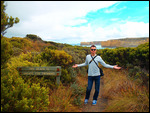


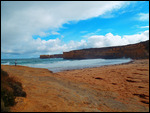
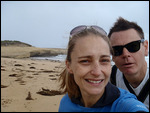


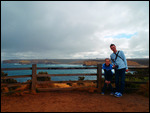
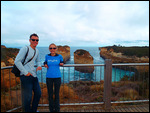
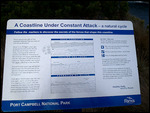

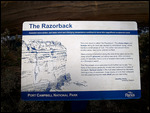
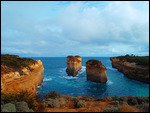
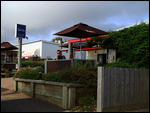
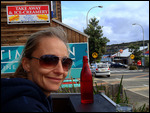

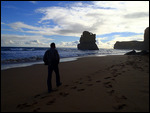

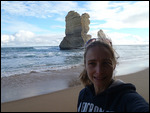

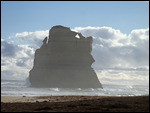




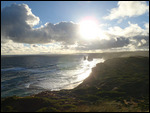

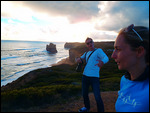
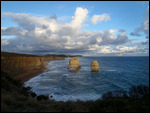

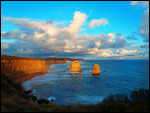
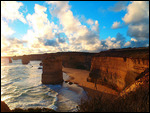



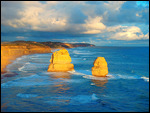
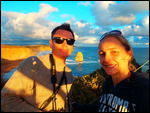






2025-05-22